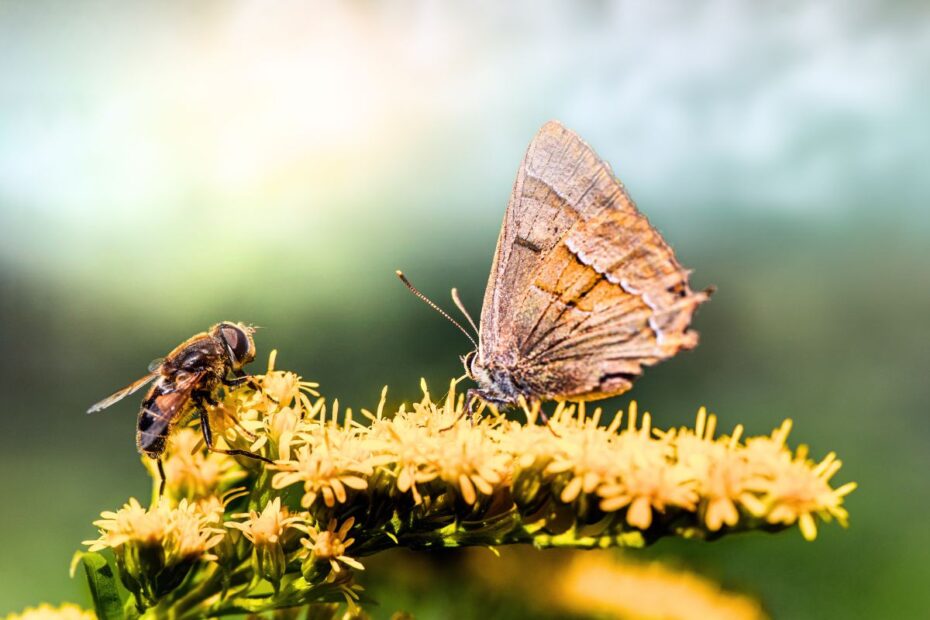There’s something magical about late summer evenings — the fading light, the cooler air, the sense that the season is winding down. But while many people think gardening pauses after July, the truth is quite the opposite. The end of summer is a perfect moment to give your garden new life, creating a haven for pollinators, birds, and soil health that will carry into next spring.
The power of late planting for biodiversity
Warm soil and more frequent rains in late summer make it easier for seeds and young plants to establish strong roots before winter. Planting now means you’re setting up food supplies for autumn insects, safe shelters for overwintering species, and continuity for your garden’s ecosystem. Instead of winding down, this is the season when a truly “wild garden” comes alive.
The beauty of wildflower meadows
One of the simplest — and most rewarding — late-summer projects is sowing a wildflower mix. Think cornflowers, poppies, phacelia, clover, and marigolds. These seedlings germinate quickly, survive the winter, and burst into bloom early next spring, stronger than ever.
A personal trick? Add a few herbs and vegetable flowers like coriander, dill, or fennel. They’re inexpensive, attract bees and butterflies, and close the loop between kitchen and garden. Choosing local, nectar-rich plants ensures your patch is perfectly adapted to both the climate and your local wildlife.
Creating natural refuges for insects
Wild gardens thrive when we resist the urge to over-manage. Leaving tall grasses, dry stems, or even a pile of stones can create natural shelters for beneficial creatures. Homemade bug hotels — bundles of hollow stems, drilled wood blocks, or overturned pots filled with straw — are cheap, effective, and surprisingly lively once autumn settles in. Even an old log can become a bustling habitat, reminding us that sometimes the best gardening is simply stepping back.
Perennials and grasses for long-lasting impact
Late-summer is also the right time to plant perennials that will shine next year. Yarrow, coneflowers, rudbeckias, and asters provide nectar for pollinators into October and November, extending the season. Pair them with ornamental grasses like miscanthus, pennisetum, or molinia. They sway beautifully in the wind, offer perches for birds, protect soil, and add winter structure to your yard.
A kitchen garden with a second life
Even the vegetable patch can play a role in biodiversity. Green manures such as mustard, clover, and vetch enrich the soil while drawing in insects. Allowing plants like arugula, chicory, or beets to go to seed provides flowers for pollinators and seed for birds and small mammals. Instead of pulling everything out, let some of it transform into a miniature ecological corridor right in your backyard.
Berry bushes to feed the birds
For an extra boost, plant berry-producing shrubs such as elderberry, viburnum, or hawthorn. If planted now, they’ll root deeply before winter and reward you with fruit the following year. Mixed hedges not only feed thrushes, robins, and tits, but also create natural boundaries that shelter countless species.
A simple chart for late-season planting
| Type of planting | Examples | Benefit for biodiversity |
|---|---|---|
| Wildflower meadow | Cornflowers, poppies, phacelia | Nectar for pollinators |
| Perennials | Asters, coneflowers, rudbeckias | Extended bloom, shelter |
| Ornamental grasses | Miscanthus, pennisetum, molinia | Habitat and soil protection |
| Green manures | Mustard, clover, arugula | Soil enrichment, seeds for wildlife |
| Berry shrubs | Elderberry, viburnum, hawthorn | Food for birds, natural hedges |
| Refuges | Tall grass, logs, insect hotels | Winter shelter for insects |
Letting nature take the lead
Gardening at this time of year is less about control and more about trust. Sometimes a “weed” pops up and fits in beautifully. Sometimes an overlooked corner becomes a sanctuary for ladybirds. The joy comes not just from planting, but from watching life find its way.
So before autumn fades, try sowing, planting, and leaving a little space for the wild. You’ll gain a richer, more resilient garden — and perhaps, like many of us, you’ll find a sense of peace in letting nature do some of the work.
